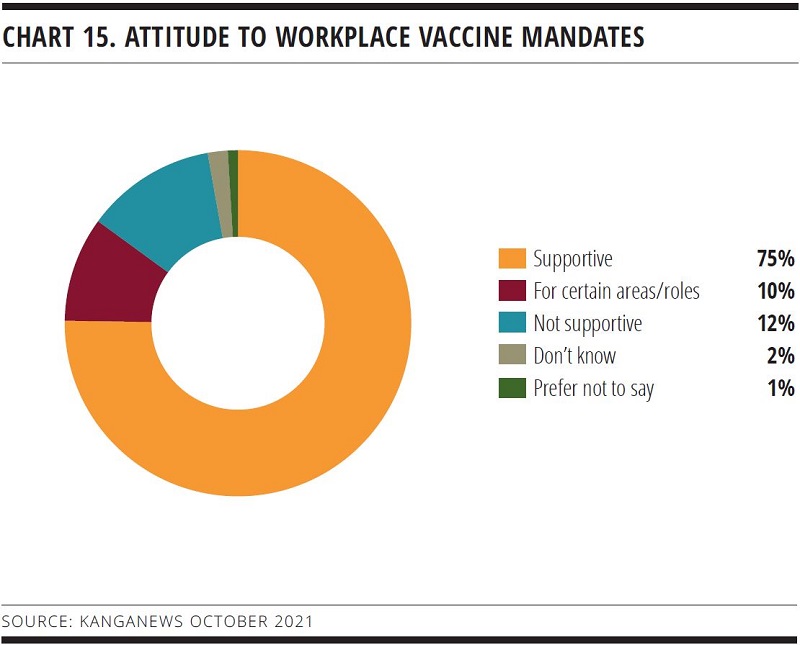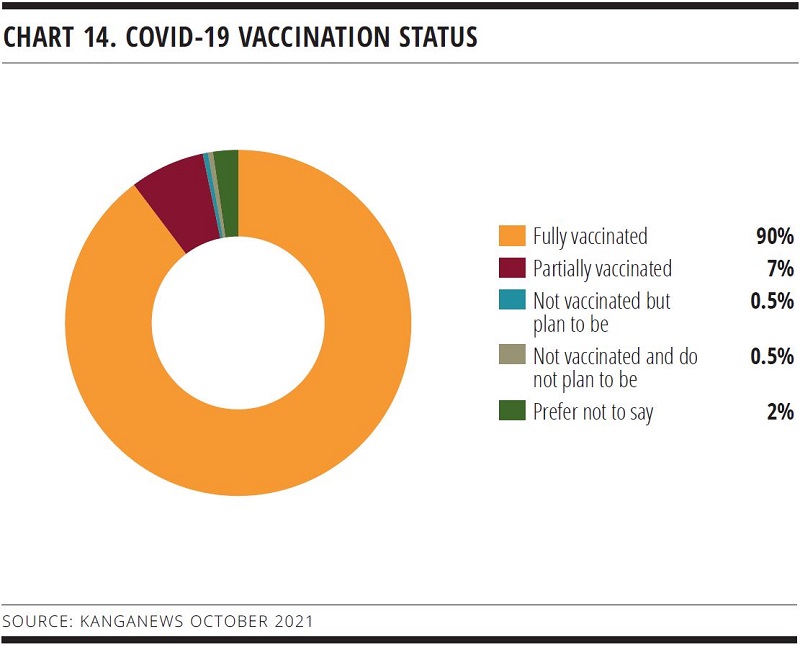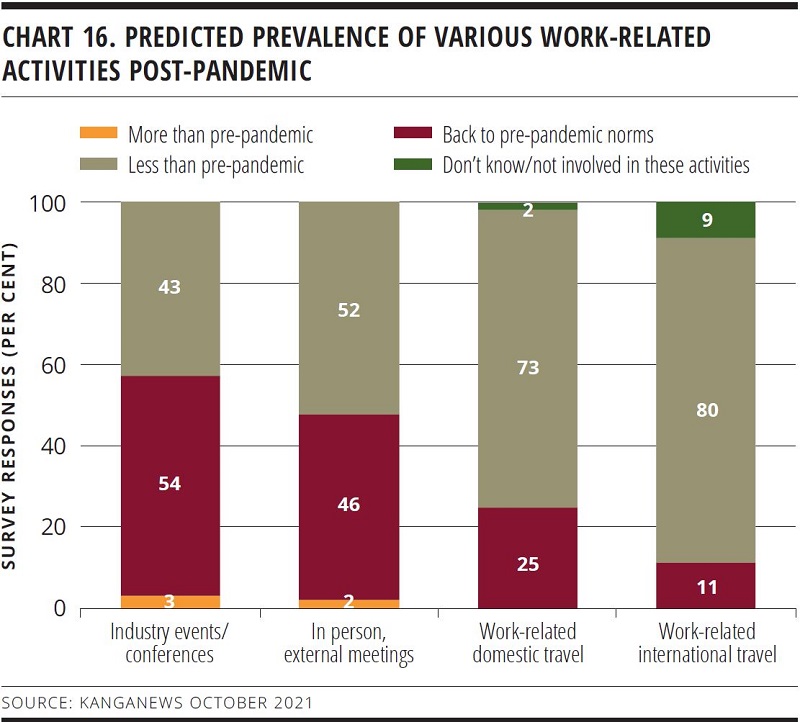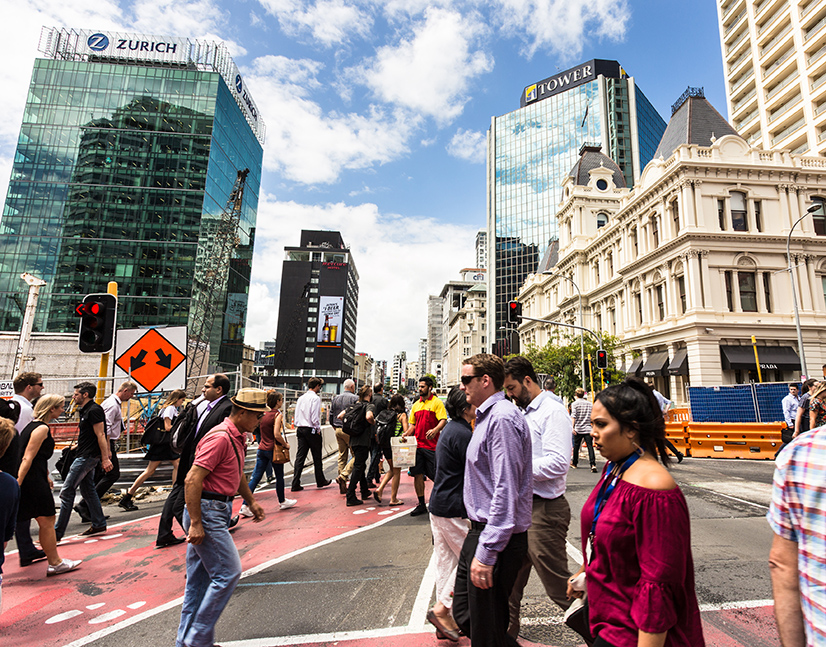
Working life: Looking for the new normal
Nearly 250 women from across the Australasian capital-markets universe shared their views on what working life could look like after the pandemic in the second annual KangaNews Women in Capital Markets survey conducted in October. The consensus is clearly that COVID-19 has reshaped working practices forever.
Last year, KangaNews surveyed women working in capital markets to get their perspectives on gender and diversity in the industry. Rather than reassess the state of play 12 months later, this year’s survey is a deep dive on a finding of last year’s results – that the industry could do more to support more flexible working practices. In particular, it examines the pandemic’s effect on working life now as well as what it may look like in the longer term.
The survey achieved a significant boost in engagement in its second iteration, adding nearly 50 per cent to the number of responses received. Similar to last year, respondents skewed toward middle and senior management, with two-thirds of participants having worked in finance and capital markets for more than 11 years (see charts 1 and 2).
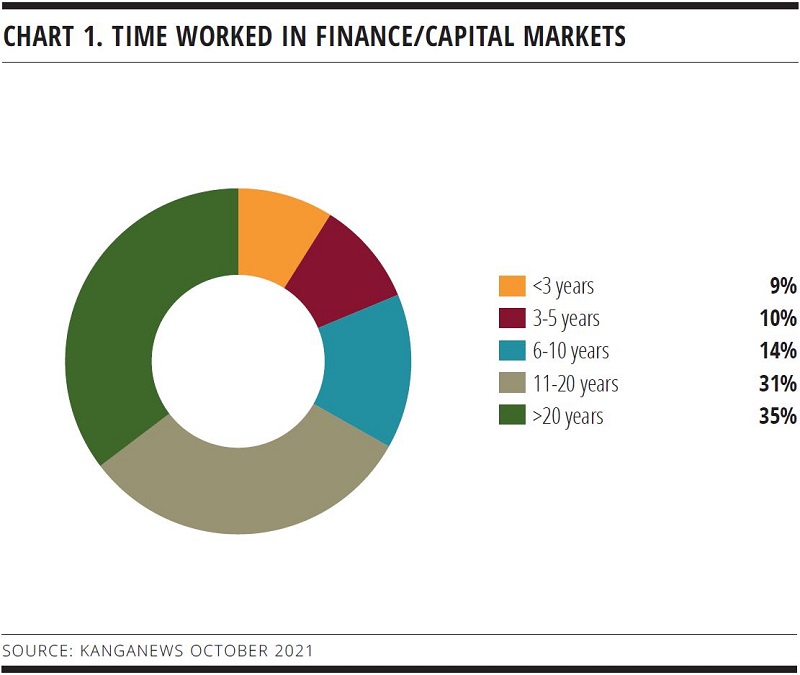
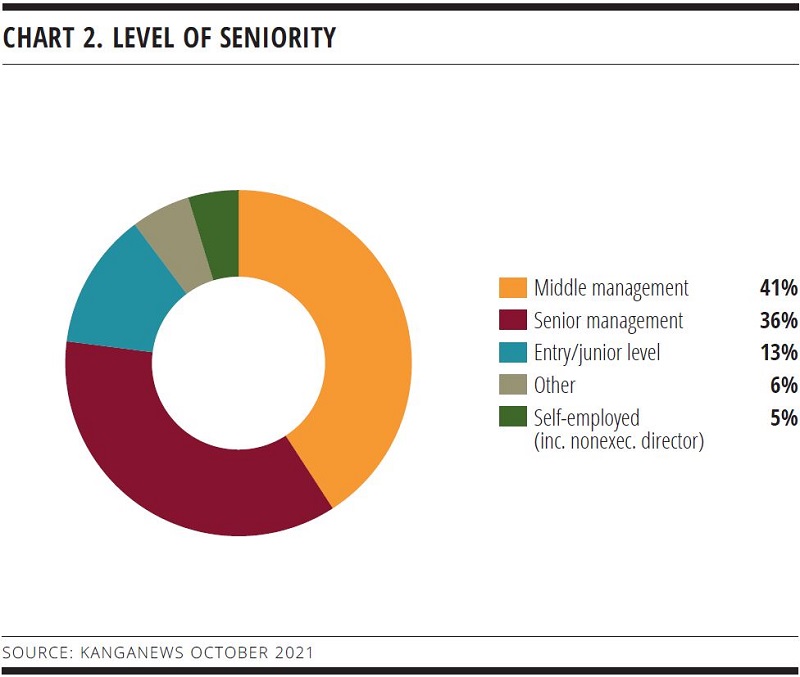
By sector, women who work at institutional and investment banks were again the most represented in survey responses, but only marginally. Overall, surveys were filled in by women working in institutions across the full gamut of capital markets (see chart 3).
In addition to exploring women’s experiences during the pandemic, the most notable conclusion of the survey is the effect the pandemic could have on working norms even as life reaches the new normal.
The COVID-19 crisis has changed society in many ways, including how people work. Many industries have pivoted to work-from-home arrangements and the capital markets are clearly no exception.
Pre-pandemic, the majority of women say their usual setup was either always or primarily office-based (see chart 4). However, only 50 per cent believe they will return to complete or majority office-working. In fact, 73 per cent of women say there will likely be a permanent change to working arrangements compared with the pre-pandemic period (see chart 5).
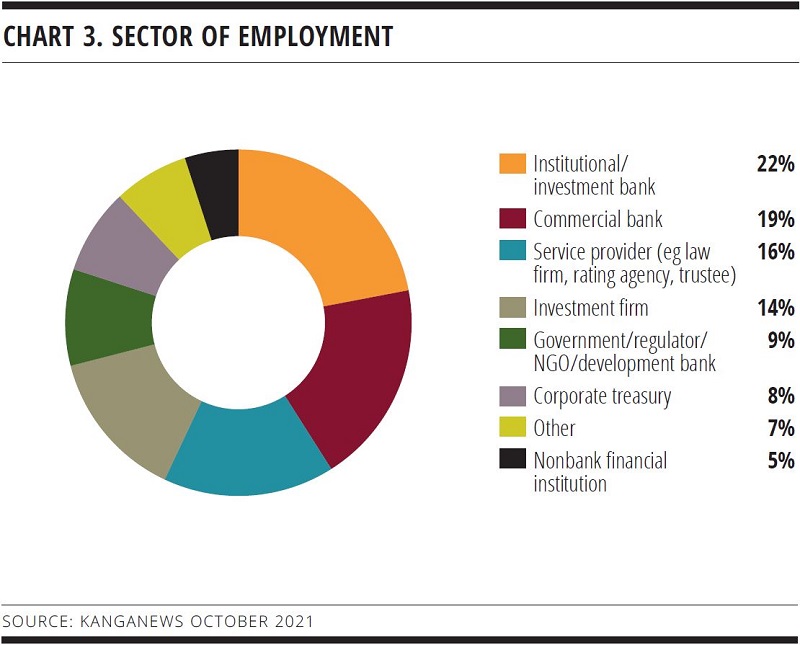
This is not to say there will be a permanent shift to full-time home working. More than three-quarters of survey respondents predict their work will either be primarily office-based or a balanced share between office and home – it is just that full-time office working may become a thing of the past.
This differs slightly from ideal-world preference. While most women who responded to the survey would prefer an even split between the office and home environment, the balance is almost equal between primarily home working versus primarily office working.
It is unsurprising that women favour a mix of home and office working, given they also identify clear advantages from both. More than four-fifths, for instance, value the interpersonal contact of being in an office environment while three-quarters identify not having to commute as a benefit of home working.
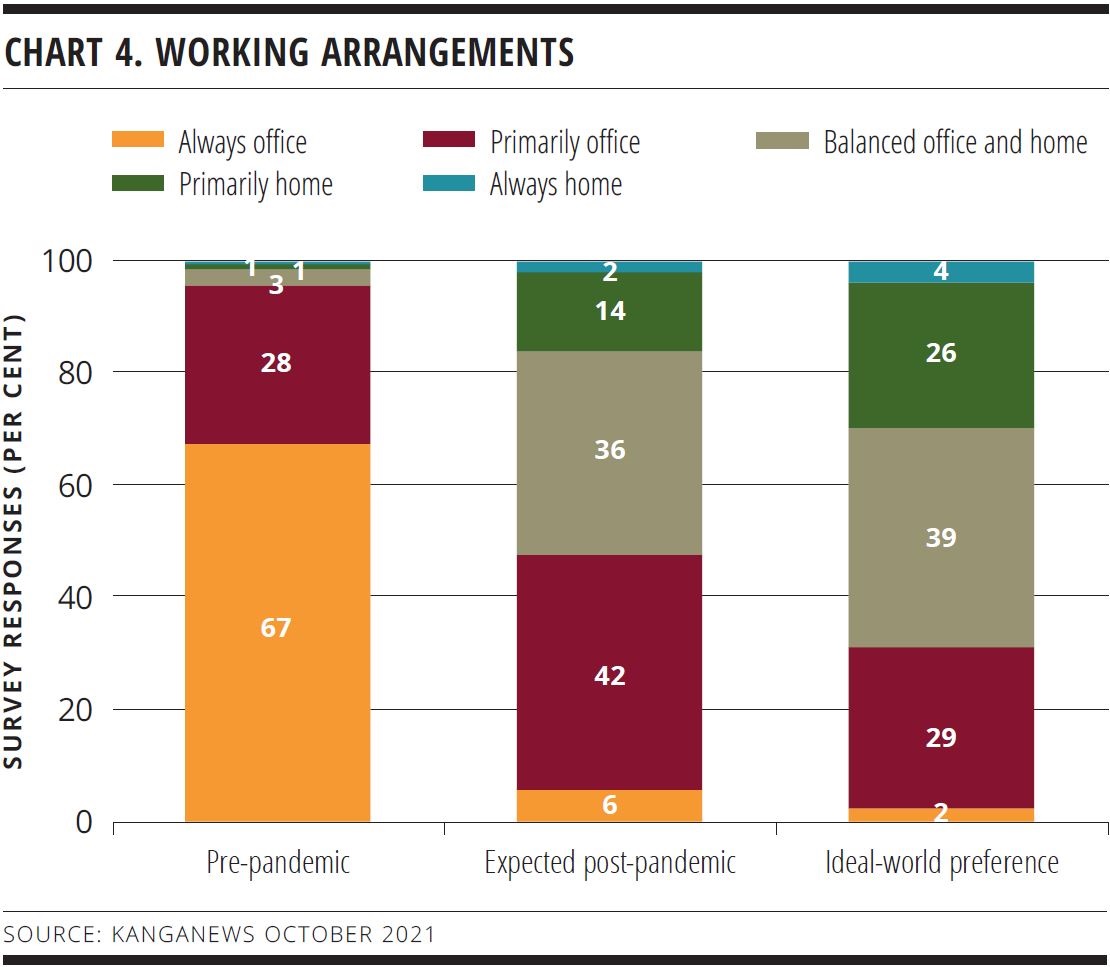
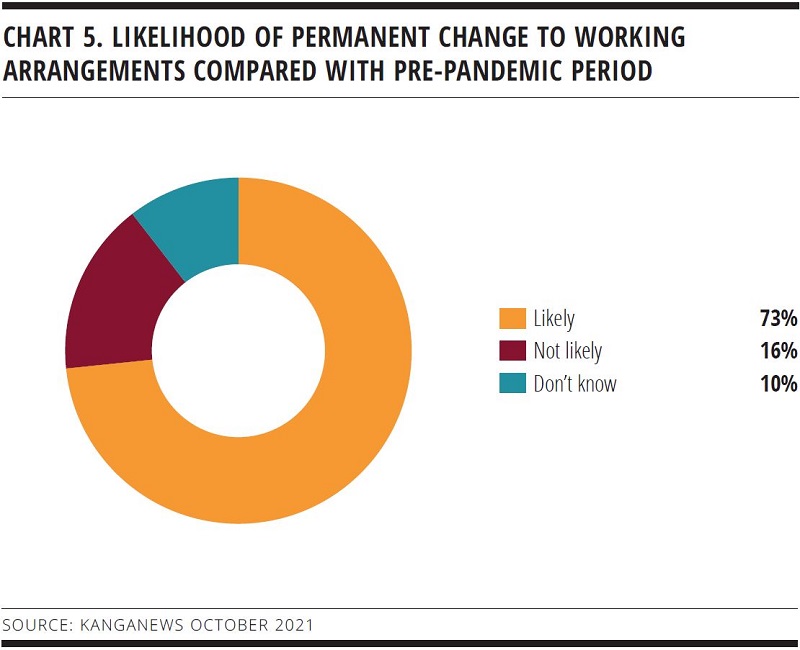
Just a handful of survey respondents say the benefits of either working style are outweighed by the value of the other (see charts 6 and 7).
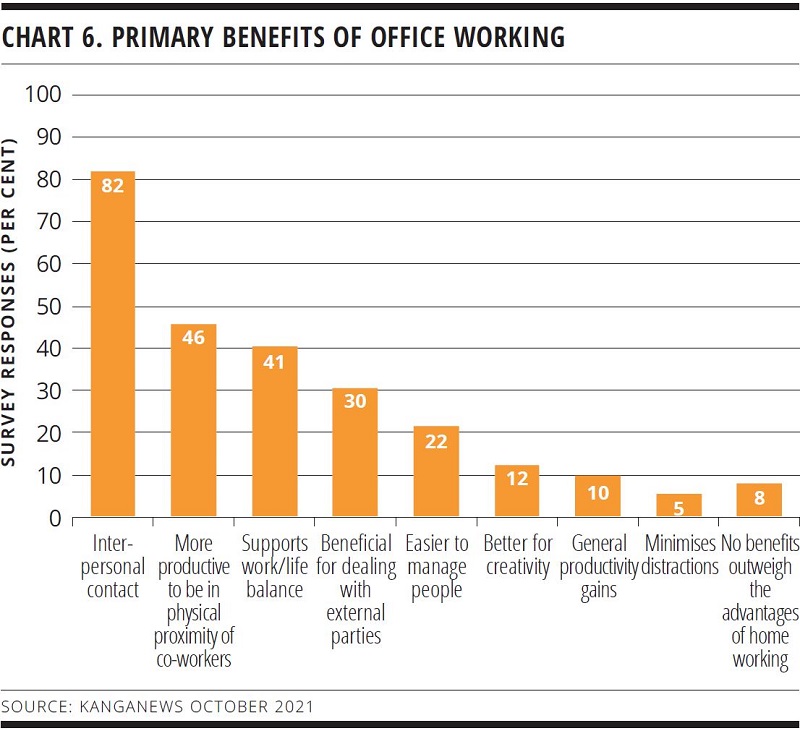
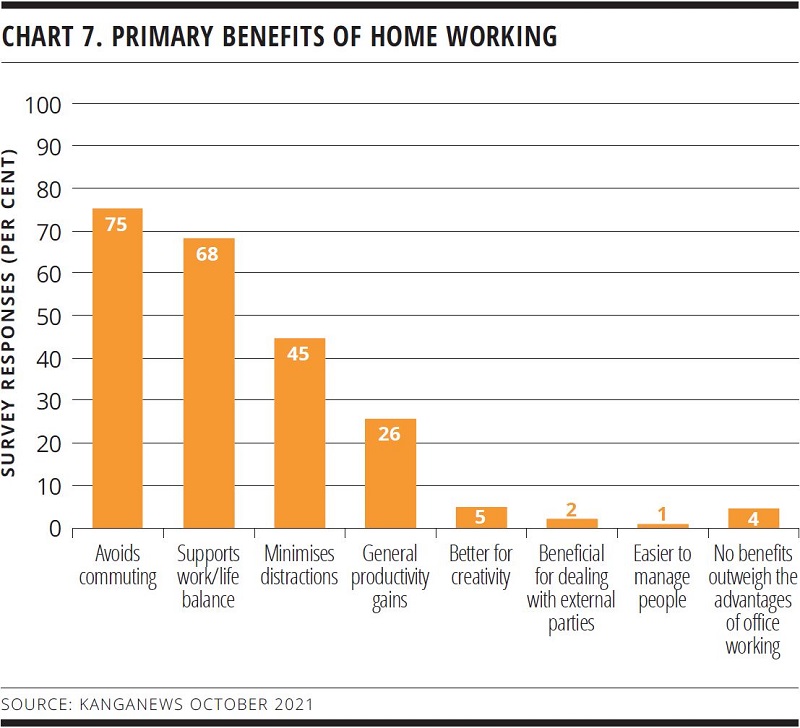
Despite the overall preference for a greater level of home working in future, 69 per cent of women also say they experienced an increase in working hours during the pandemic, which included work spread over more of the day as well as evening or weekend work (see chart 8).
Longer hours likely were not the product of home working in and of itself, though. Survey responses suggest the pandemic has simply been a busy period for women working in capital markets, as 63 per cent of women say there was more work to do, which was inevitably a major contributor to increased hours (see chart 9).
On the other hand, almost half also say not having to commute contributed to more hours at the desk, giving weight to the idea home working does not necessarily mean more leisure time.
Clearly, women in capital markets would rather be at work than travelling to and from it.
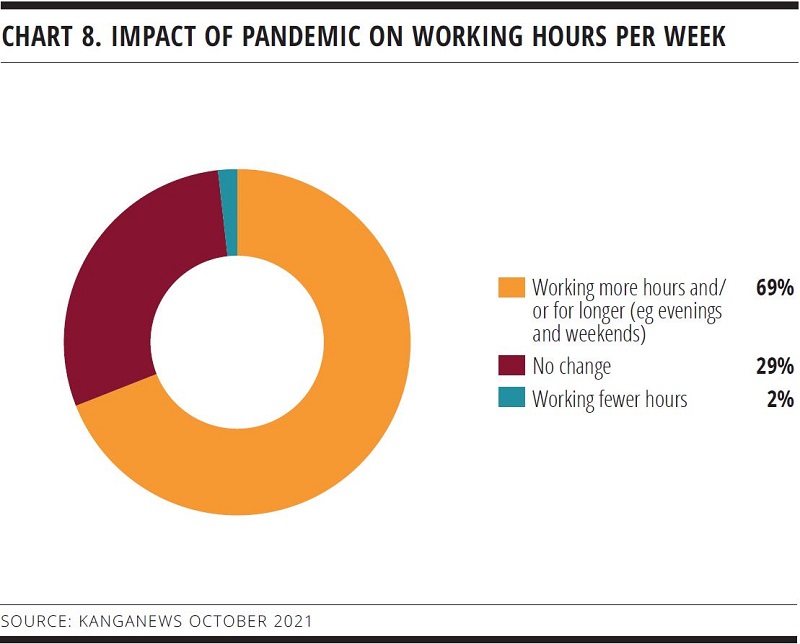
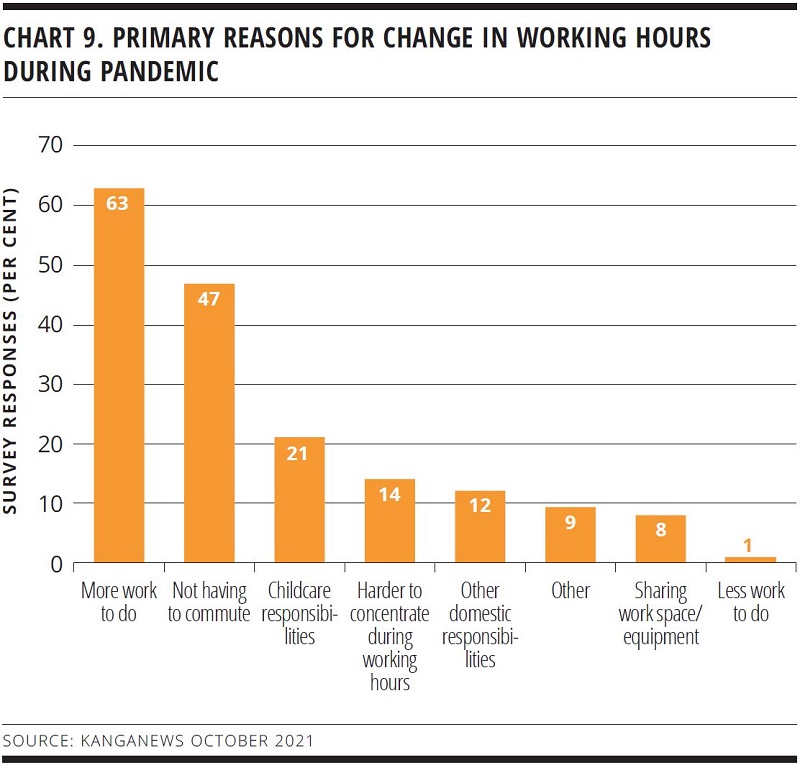
For some respondents, childcare responsibilities also had some impact on increased working hours. Women with primary or significant childcare responsibilities made up 42 per cent of survey respondents (see chart 10). Of these, 57 per cent say increased obligations in this area meant their work hours or working day increased (see chart 11).
However, it seems that any pandemic-induced increase in childcare responsibilities is likely to dissipate, despite many women saying they will continue to work from home at least some of the time.
Of women with primary or significant childcare responsibilities, the average survey response suggests their share of the task increased during the pandemic but should return to roughly the same level once the crisis is over (see chart 12). This may be a product of home schooling during lockdown periods.
Attitudes vary somewhat on out-of-office commitments. Most women are at least as happy as they were before the pandemic to meet external clients and attend industry events. There is a degree of reluctance, by contrast, to return to the old level of domestic or international work travel. The majority are comfortable returning to work-related travel, although to a lesser extent than meetings and events. Almost a third say they are less keen for domestic and international travel than they were pre-pandemic (see chart 13).
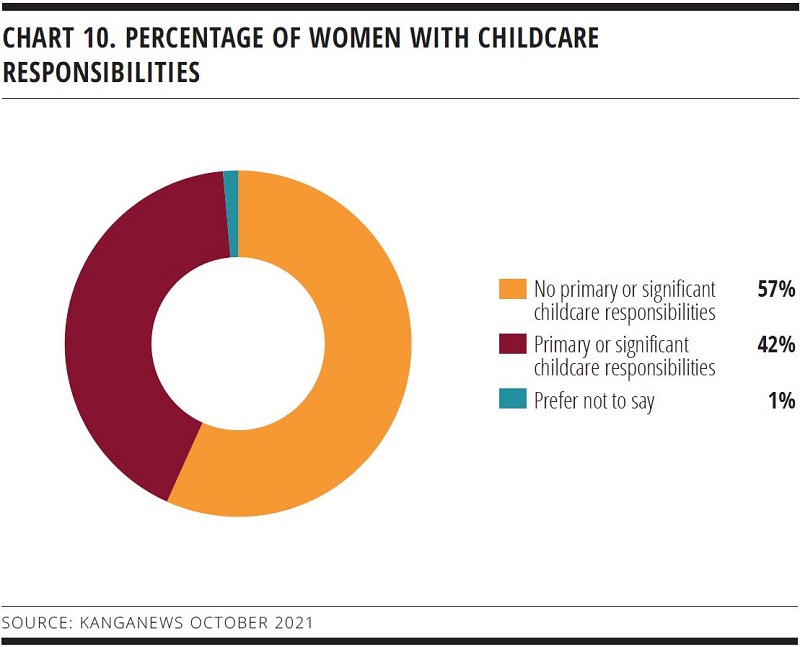
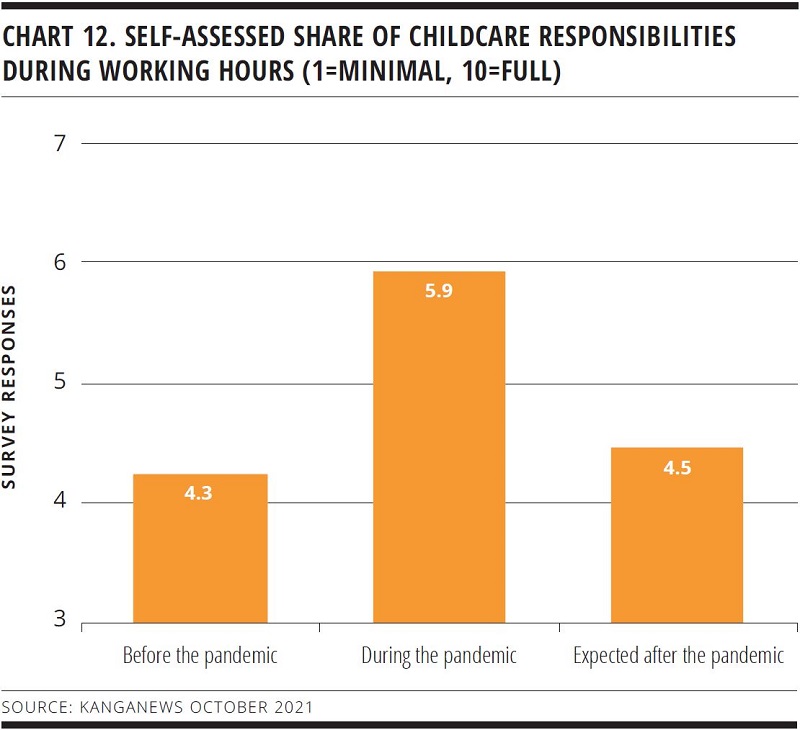
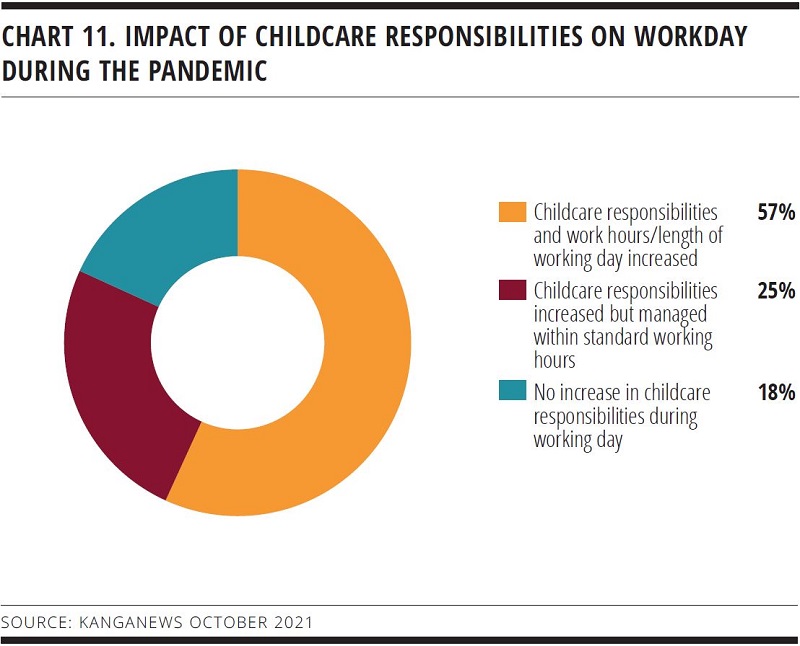
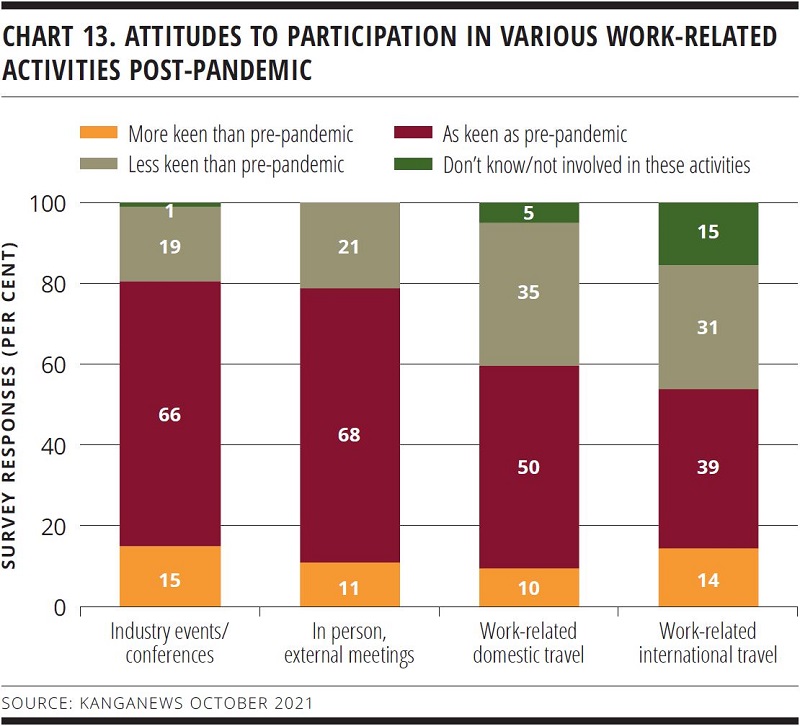
Vaccination status is likely to have little influence on the reasons for these attitudes as almost all survey respondents say they have had at least one dose of a COVID-19 vaccine (see chart 14). In addition, 85 per cent are supportive of some sort of workplace vaccination mandate, either universally or only for certain areas or roles. Only around 10 per cent of survey respondents who are or plan to be vaccinated do not support workplace mandates.
Even so, some respondents also predict many work-related activities will not return to pre-pandemic levels – particularly work-related travel (see chart 16). Alongside the likelihood of ongoing acceptance of some home-working arrangements, this suggests the pandemic has influenced a permanent shift in working culture.
Looking forward to 2022, KangaNews plans to update the KangaNews Women in Capital Markets survey to respond to market developments and events. However, the next edition of the survey will also follow up on some of the expectations about post-pandemic working outcomes from this year’s edition to see if expectations and preferences match outcomes in Australia and New Zealand’s ‘living with COVID-19’ environment.
